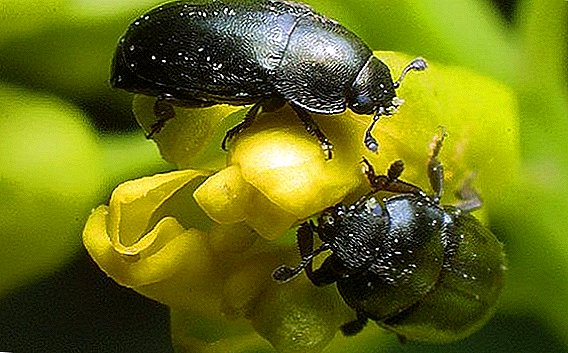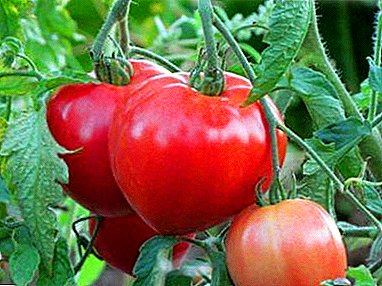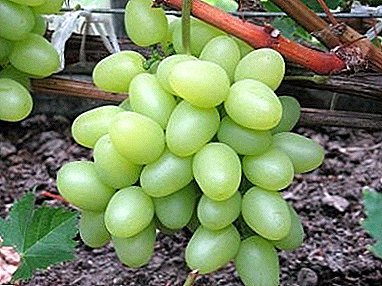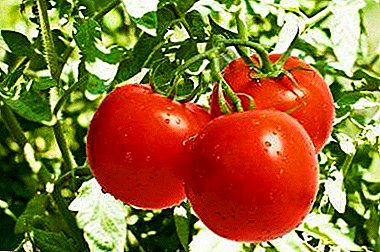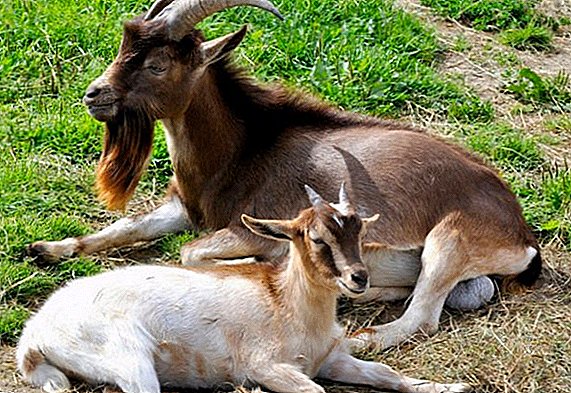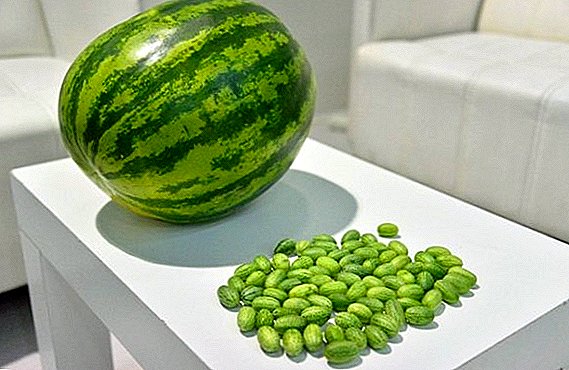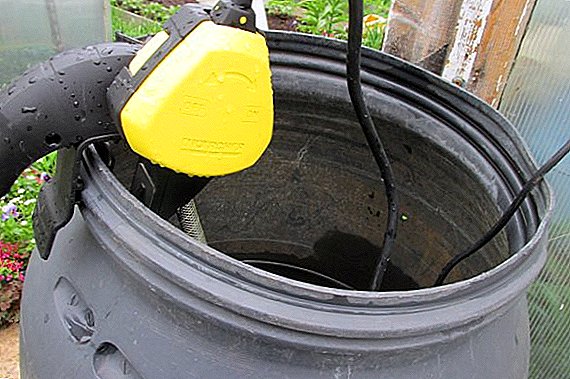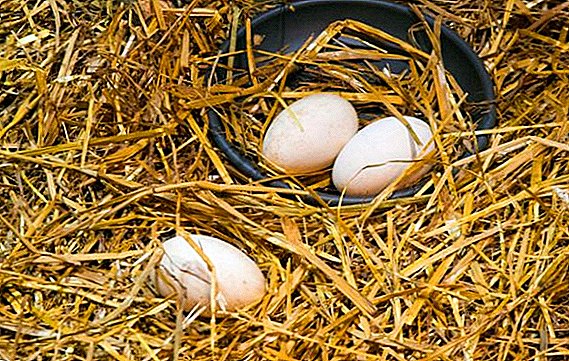 Growing turkeys at home is a popular occupation in modern farming. However, these birds were brought from distant America and in our climatic conditions they do not always take root. Therefore, when breeding them, it is necessary to provide birds with comfortable conditions for development. And you need to start with the removal of turkeys from eggs, in this case - in the incubator. And for this you will need to study such a process as ovoscoping, which we will tell you about today.
Growing turkeys at home is a popular occupation in modern farming. However, these birds were brought from distant America and in our climatic conditions they do not always take root. Therefore, when breeding them, it is necessary to provide birds with comfortable conditions for development. And you need to start with the removal of turkeys from eggs, in this case - in the incubator. And for this you will need to study such a process as ovoscoping, which we will tell you about today.
How to choose eggs for bookmark and if you need an ovoscope
Experienced poultry farmers know that in order to breed healthy and active chicks, not only turkey, but also other poultry, the quality of the material that will be laid in the incubator is very important. 
External signs
In the first stage, the eggs must be sorted. First of all, they are carefully examined and rejected specimens with a problem shell.
Learn how to choose high-quality eggs for incubation, how to wash eggs before laying in the incubator.
In the marriage are instances that have on the external coating are:
- roughness;
- irregularities;
- growths;
- grooves.
Of course, chicks are also bred from such eggs, but the percentage of hatching decreases, and the poults themselves are often defective, because gas exchange is disturbed in the wrong specimens.
In addition, one should also reject material with bluish or greenish spots (this is mold), as well as irregular shapes: too elongated or too round, very large or, conversely, very small.  However, a visual inspection cannot give a full guarantee that the selected material can already be placed in an incubator. Therefore, it is necessary to examine it more closely with the help of an ovoscope.
However, a visual inspection cannot give a full guarantee that the selected material can already be placed in an incubator. Therefore, it is necessary to examine it more closely with the help of an ovoscope.
Important! For breeding turkeys in an incubator, experts advise choosing eggs of the same size.
We use ovoskop
After a visual inspection, the eggs should be inspected with an ovoscope in order to reject unsuitable material and to obtain healthy turkey offspring in the future.
The process of x-raying is simple: the incubation material is applied to the opening of the ovoscope or placed on the grate and rotated in different directions. In this way, you can clearly see the air chamber, and the yolk is visible as a shadow with vague borders.
Learn what an ovoscope is and how to properly ovoskopirovat eggs, as well as how to make an ovoscope with your own hands.
When radiography, first of all, pay attention to the location of the yolk. In high-quality eggs suitable for incubation, the yolk is in the middle and is surrounded by protein on all sides. On the vertical axis, it is located closer to the blunt end.  If, while turning, the yolk slowly moves away to the side and returns to the site at the same pace, then this means that the gradients holding it free are intact. If at least one of them breaks off, then after turning the yolk back does not return or freezes at one of the ends.
If, while turning, the yolk slowly moves away to the side and returns to the site at the same pace, then this means that the gradients holding it free are intact. If at least one of them breaks off, then after turning the yolk back does not return or freezes at one of the ends.
Such specimens are not suitable for incubation.
Did you know? The largest egg in the bird world lays ostrich - diameter 15-20 cm. Anti-record in this regard belongs to hummingbirds - 12 mm. The only chicken that could compete with the ostriches is the Harriet layer, which laid an egg with a diameter of 11.5 cm.
Do not use for breeding and instances in which the yolk is close to the shell or in contact with it. It is also unsuitable for incubation material, in which there is a gap in the yolk membrane, and the yolk itself mixed with protein.  Neither are quality eggs with bloody patches that may result from damage to the capillaries during egg formation.
Neither are quality eggs with bloody patches that may result from damage to the capillaries during egg formation.
Thus, at primary ovoskopirovaniya material is selected on the tab in the incubator. In the future, the ovoscope will come in handy more than once during the incubation process itself.
Features incubation turkey eggs
The incubation period is rather difficult: you should always monitor future turkey poults and provide certain conditions for their ripening. Thus, the temperature in the incubation station should be maintained at +38 ° C for the first 7 days, and the humidity - 70-80% (from the 17th day it can be reduced to 50%).
Familiarize yourself with the rules for growing poults in an incubator and with the table for incubating turkey eggs at home.
Since the eggs absorb a lot of oxygen during the incubation process, good air exchange should be ensured for them. In addition, on the 15-25th day, the material begins to cool for 30-40 minutes a day. 
Why ovoskopirovat eggs during incubation
To get a healthy livestock, simply observe the regime of humidity and temperature is not enough. Ovoscopic examination should be carried out regularly in order to detect frozen embryos in a timely manner.
With the help of an ovoscope, it is possible to determine whether there are any pathologies or not:
- unfertilized eggs will be light in the middle;
- if the embryo has stopped, blood bands or rings will be visible inside;
- a healthy, developing fetus will be visible along with the formed circulatory system.
Generally speaking, ovoscoping is necessary to control the process of incubation and timely rejection of specimens with impaired embryo development. 
Ovoskopirovaniya turkey eggs by day
In the process of ripening, the fetus goes through 4 stages, at each of which it should be carefully examined. If, during incubation, abnormalities in the development of the embryo are noticed, the conditions of incubation change.
Did you know? Despite the fact that the ostrich lays the largest eggs in the bird world, they are the smallest compared to the size of the ostrich itself. But the largest eggs relative to the size of the bird lay kiwi.
The first ovoskopirovaniya (8th day)
On the 8th day after the eggs have been laid in the incubator, a first translucence is performed, which will help to remove potentially useless material.
At this stage, the silhouette of the embryo is already visible and its circulatory system is visible. If fertilization has not occurred, then the yolk looks like a dark spot, and the circulatory system is either not visible or not at all.
If during the examination the shell was accidentally damaged, it can be carefully glued with tape or plaster. 
The second ovoskopirovaniya (13-14th day)
No less important stage in the development of the fetus runs from the 8th to the 14th day. On the 13-14th day a significant event occurs - allantois closes. With the help of this body the fetus is able to consume air from the environment.
Important! Reference books on poultry farming recommend ovoscoping only on the 8th and 25th day of bookmark.
On the 14th day, you can enlighten eggs to assess the development of the fetus. When translucent, the fruit will look like a dark spot, on which the vascular grid will be clearly visualized. If the circulatory system is not visible, and the fetus is not fixed and moves freely, then the germ has died.
Third ovoskopirovaniya (25th day)
At the last stage, significant changes are observed in the metabolism of the fetus - its own temperature appears. It was during this period that ventilation was especially carefully monitored to avoid overheating of the eggs.  Approximately on the 25th day it begins to fire, so one should carry out the last ovoscoping and check the viability of future poults.
Approximately on the 25th day it begins to fire, so one should carry out the last ovoscoping and check the viability of future poults.
When radiating eggs should be completely dark, almost to the borders of the air chamber. Only the camera will appear through. This is the position that suggests that the embryo is alive and well.
Hatching
Hatching turkeys occurs on the 26-28th day.
As soon as it starts to cool, the temperature in the incubator should be set at +37 ° C, and the humidity should be set at 65-70%. The release of chicks will begin on the 27th day, towards evening, and end on the 28th. In general, the process takes more than 10 hours.
The incubator during hatching turkeys can not be opened - wet chicks can be supercooled. They are removed from the device only after they all dry completely.  However, it is still too early to relax. The first day after breeding is very important for the life of chicks. When turkeys get out of the incubator, they need to create a suitable microclimate. Chicks should be placed in a clean box, the bottom of which should be covered with a cloth.
However, it is still too early to relax. The first day after breeding is very important for the life of chicks. When turkeys get out of the incubator, they need to create a suitable microclimate. Chicks should be placed in a clean box, the bottom of which should be covered with a cloth.
Did you know? Many poultry farmers predict the weather for turkeys: before changing the weather for the worse, these birds begin to pluck themselves.
Some farmers recommend putting down a heating pad. The room where turkey poults will be located should be maintained at +35 ° C. If the chicks are cold, they begin to lump together and refuse to approach the food.
They ate turkeys, on the contrary, it was hot, they lay down on the floor and spread their wings.
As we see, ovoscoping is an important stage in the incubation of turkey eggs. Compliance with all recommendations will help to choose high-quality incubation material, monitor the maturation of eggs at all stages of development and increase hatchability of poults up to 100%.


